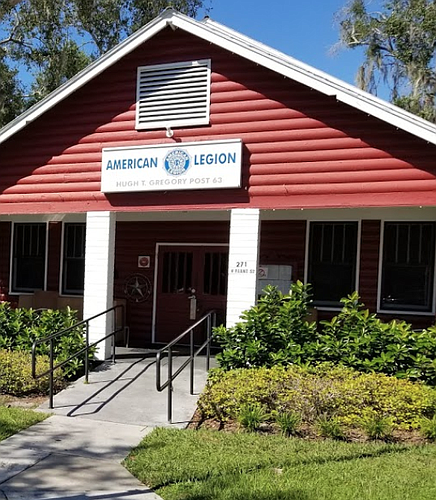- April 26, 2024
-
-
Loading

Loading

Post-traumatic stress disorder commonly is associated with war veterans; it was known as “shell shock” after World War I and “combat fatigue” following World War II. But anyone who has experienced or witnessed a traumatic event can be diagnosed with PTSD.
Therapists have tried different neurological intervention techniques, with varied degrees of success — and now a new therapy is proving to be even more successful.
Mental health professionals trained to treat PTSD with the Reconsolidation of Traumatic Memories protocol are recording positive results in a majority of their patients, said Kurt Gies, commander of American Legion Post 63, and it has been used to treat RTM in survivors of mass shootings and childhood sexual abuse victims, among others.
The number of veterans from recent wars alone with PTSD has conservatively been estimated at 400,000. Many who can’t process the trauma may turn to alcohol, drugs or suicide.
The American Legion post, in downtown Winter Garden, has created a fund to help local veterans go through the treatment in an effort to reduce the number of daily veteran suicides from 22 to zero.
HOW RTM WORKS
The Research and Recognition Project has designed this alternative therapy, a neurolinguistics program that disassociates the trauma from the patient.
According to researchandrecognition.org, this is how it works:
RTM begins by questioning clients until they respond physiologically, typically with changes in breathing, heart rate and vocal pitch. The response is stopped before re-traumatization can occur.
The dissociation begins by asking clients to imagine themselves in a movie theater. On the screen is a still image of clients performing some neutral activity in a safe context prior to the trauma. Then, they are asked to imagine floating away from their bodies in the theater to a projection booth. From this vantage point, they are instructed to watch themselves in the theater, watching themselves on the screen.
After establishing these three levels of dissociation, clients are instructed to watch a black and white picture of themselves on the movie screen at a time before the traumatic event. As they focus on the imagined picture, they are directed to watch themselves in the theater as they watch a black and white movie of the traumatic event. They watch themselves in the theater watching the event until a safe time after the trauma has fully passed. This process is repeated until watching the entire movie can be done without any observable discomfort.
When they can watch the movie comfortably, they are asked to step into it and experience the entire sequence, fully associated, in color, in reverse and at very high speed.
When the trauma can be talked about with no discomfort, the intervention is presumed to have worked.
After they have gone through this several times, they will be asked to write an alternate and better ending. While it's not real, it allows their minds to accept something that's less scary.
THE RESULT
Patients are told they need to complete the three to five 90-minute sessions to receive the entire benefit, no matter how good they feel after the initial rounds. Therapists are reporting a success rate of 90% or more in patients who complete the protocol.
Several Central Florida therapy groups have been trained in the protocol. Gies said he has worked with First Orlando Counseling for about a year and was invited to a training session to see it in person. He has seen clients go — on a scale of 1-10 — from a 10 down to a 1 or 2.
“One veteran was going to kill himself but there were two children living above him and he worried where the bullet would go after it left him,” Gies said. “So he went to RTM therapy. … (He) swears that he is completely cured from any symptoms of post-traumatic stress.”
Gies said the veteran now is trained to carry out the protocol for other victims suffering from PTSD.
“The more people who can get trained in the protocol, the more people can get treated,” Gies said.
Post 63 currently is paying for two people to go through the relatively easy training process, he said.
“They’re finding that no matter who issues the protocol, they're getting the positive results,” Gies said. “It's pretty phenomenal stuff.”
Kari Russo, of Windermere, is a therapist with First Orlando Counseling who specializes in RTM protocol. She also hosts a weekly podcast called “Life After PTSD.”
“I’m on a mission to get as many people trained as I can,” Gies said. “She has a passion for getting as many people treated.”